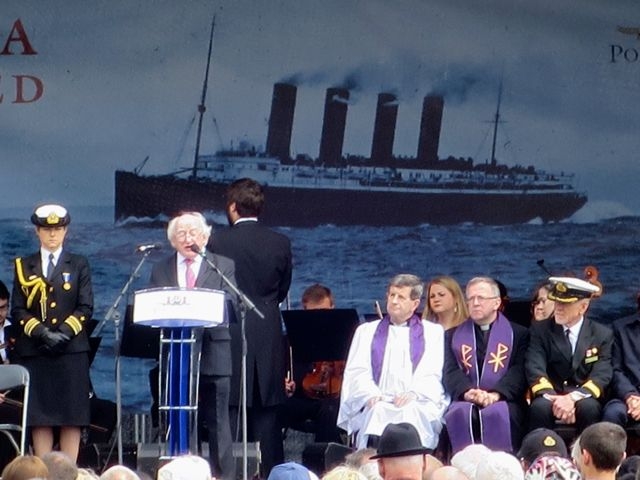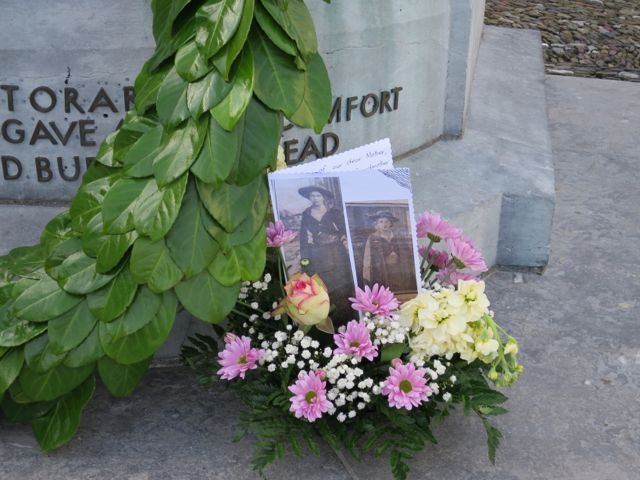Centenary News reports from Cobh, where thousands of visitors packed the streets on May 7th 2015 for a day of tributes to mark the 100th anniversary of the sinking of the Lusitania.
Descendants came to the Irish port from across the globe to share stories of the passengers and crew who survived the German U-boat attack on the Cunard flagship, and those who didn’t.
Ireland’s President, Michael D. Higgins, said it was a moment “to remember the lives cut short and the futures and the possibilities denied by the tragedy visited on unsuspecting voyagers who thought they were in safe reach of their destination.”
On a sunny afternoon, much like the weather 100 years ago, the siren of the present day Cunard cruise liner Queen Victoria blared mournfully across the waterfront at 2.10pm to remember the moment the torpedo struck.
It sounded again at 2.28pm, a reminder to all those present that the Lusitania sank in just 18 minutes with the loss of 1,200 lives.
President Higgins led the tributes at the Lusitania Peace Memorial in Cobh, the port on the County Cork coast formerly known as Queenstown.
The British, German and American ambassadors, together with representatives from Cunard, joined Ireland’s head-of-state in laying wreaths at the monument overlooking the harbour.

Speaking on the waterfront, Mr Higgins reflected that the sinking of the Lusitania had been a “critical chapter” in the history of the First World War, “filling the pages of many books and articles” in the decades since.
But the Centenary was a day for remembering the human tragedy of the passengers and crew who died, he said.
The President also spoke of the “almost unthinkable horror” and “the terrible choices and anxieties” faced by hundreds of survivors who awaited rescue in the icy waters of the Celtic Sea surrounded by the bodies of the dead.
“We come here then today to think of those men, women and children and what they endured and we think in particular of the rapidity and generosity of those communities who rose in response to the living, the survivors and the dead,” Mr Higgins said.
Descendants left their own tributes to family members after the official commemorations were over.

Among them was Haylee Cole, an Australian student currently studying in the UK.
Her great grandmother, Gertrude Adams (pictured above) survived the Lusitania disaster. But Gertrude’s two-year-old daughter, Joan, died.
Haylee told Centenary News that she’d been greatly honoured to lay a wreath on behalf of family members so far away in Australia.
The day culminated with a flotilla of illuminated boats sailing into Cobh harbour in tribute to the rescuers, many of them fishermen, who returned at twilight on May 7th 1915 with the first survivors and bodies of the dead.

Commemorations marking the Lusitania Centenary were also held in the communities of Courtmacsherry, Kinsale, and the Old Head of Kinsale, the closest landfall to the scene of the torpedo attack 19 kilometres (12 miles) off Ireland’s southern coast.
Posted by Peter Alhadeff, reporting from Cobh for Centenary News
All pictures: Centenary News
